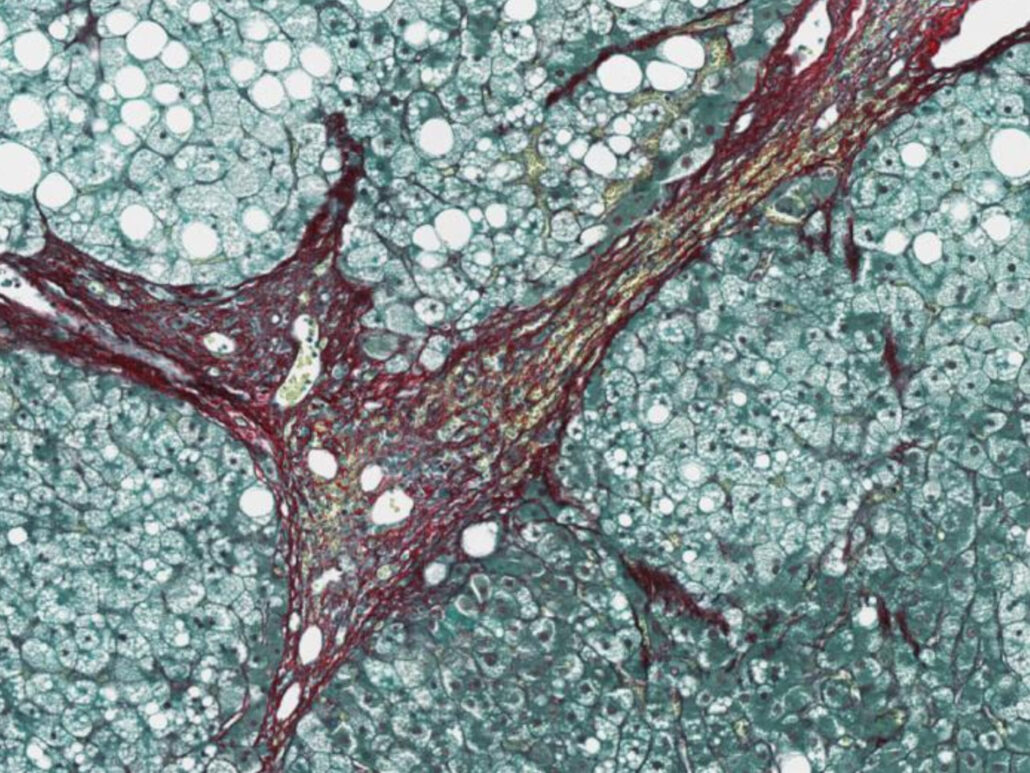VUB research team discovers essential protein that contributes to liver fibrosis
Chronic liver disease is a serious global health problem that has a severe impact on personal quality of life. A major characteristic of chronic liver disease is liver fibrosis, where certain liver cells, called hepatic stellate cells, become activated and produce scar tissue that damages the liver. At present, no specific drugs are available to treat this condition, partly because we know too little about the activation process for the stellate cells, and no specific targets have been identified to date.
A team of researchers from the Liver Cell Biology Research Group (LIVR) at Vrije Universiteit Brussel and the gastroenterology and hepatology department at UZ Brussel university hospital have now successfully identified a specific protein on the cell membrane of these liver cells.
“Thanks to new analytical tools, we can test different genetic markers very quickly and efficiently and process large data sets. That’s necessary because the functional complexity of the different genes and proteins is unparalleled,” says Leo van Grunsven of LIVR.
The identification of this protein opens up possibilities for developing new drugs to treat liver fibrosis.
“The protein has the rather uninspiring name GPR176, but that’s because we don’t yet know exactly what it does. It’s possible that it’s also linked to other functions, but we have been able to identify a strong correlation between the production of this protein and liver fibrosis in both mice and humans. When we use genetic tools to depress the production of the GPR176 protein in living mice, we see that less fibro-
sis is produced when liver disease occurs,” says Vincent De Smet of LIVR and UZ Brussel. “At any rate, this study is an important step towards the development of new and effective drugs.”
Reference:
De Smet V, Gürbüz E, Eysackers N, et. al. The orphan receptor GPR176 in hepatic stellate cells exerts a profibrotic role during chronic liver diseases. JHEP Reports (2024). doi:
https://doi.org/10.1016/j.jhepr.2024.101036
Fibrotic scar tissue (red) in a diseased liver.
© Vincent De Smet





